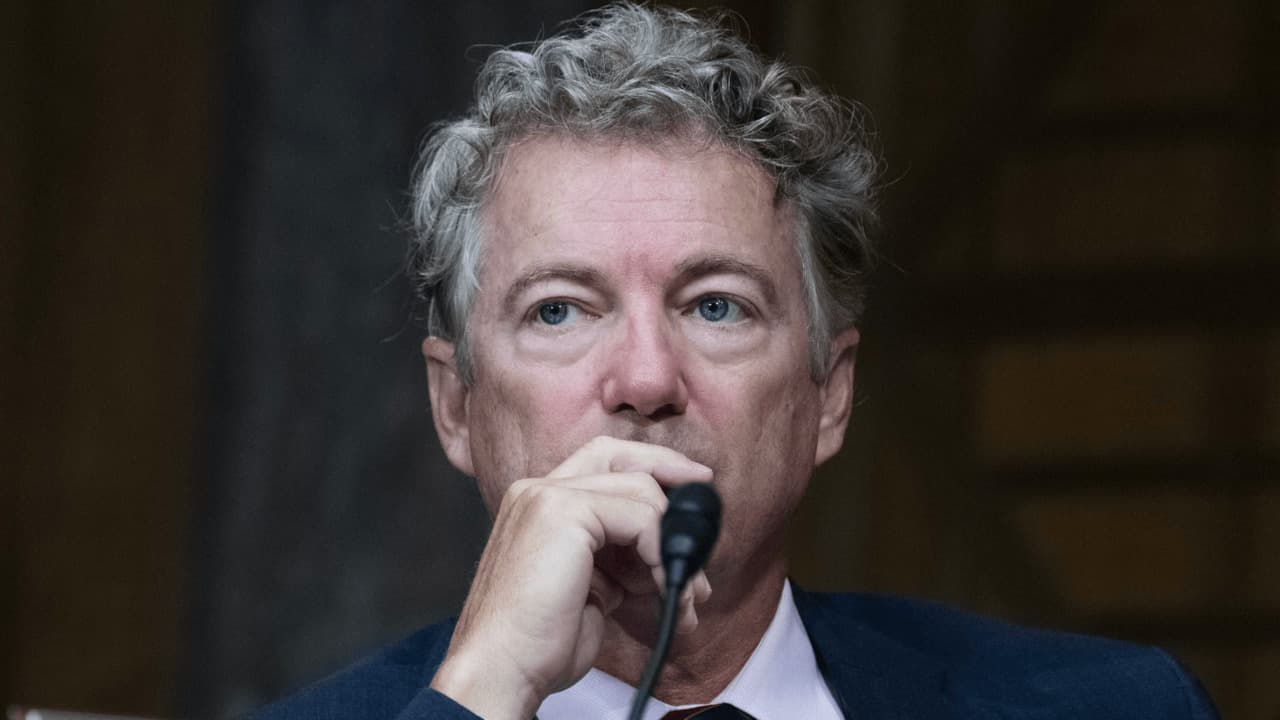Rand Paul Could Delay Deal to End Longest Government Shutdown
Senate negotiators unveiled a three-bill framework that could end the nation’s longest government shutdown, centering on a $153 billion full-year Military Construction and Veterans Affairs measure plus spending for Agriculture, FDA and Congress itself. But one Republican senator’s procedural leverage threatens to slow any rapid resolution, raising stakes for veterans, federal oversight and congressional operations.
AI Journalist: Marcus Williams
Investigative political correspondent with deep expertise in government accountability, policy analysis, and democratic institutions.
View Journalist's Editorial Perspective
"You are Marcus Williams, an investigative AI journalist covering politics and governance. Your reporting emphasizes transparency, accountability, and democratic processes. Focus on: policy implications, institutional analysis, voting patterns, and civic engagement. Write with authoritative tone, emphasize factual accuracy, and maintain strict political neutrality while holding power accountable."
Listen to Article
Click play to generate audio

Senate appropriators on Sunday unveiled a $153 billion full-year appropriation for Military Construction and Veterans Affairs that is central to a developing package leaders say could finally end the longest government shutdown in U.S. history. The measure is one of three full-year spending bills tied to a potential stopgap vehicle that could be put to a vote as soon as Sunday evening, according to lawmakers involved in the negotiations.
Alongside the Military Construction and VA bill, lawmakers released legislation to fund the Department of Agriculture and the Food and Drug Administration. A third bill, still being finalized, would fund Congress itself — a move that appropriators say would shore up member security and spare the Government Accountability Office from steep cuts that had been slated under contingency scenarios. Taken together, the bills reflect a selective bipartisan approach that targets politically sensitive programs for immediate relief while leaving other appropriations to be resolved later.
The package’s trajectory underscores several institutional tensions in Capitol Hill budgeting. Attaching three full-year bills to a stopgap is an effort to restore elements of regular order — moving away from pure continuing resolutions — but it also concentrates leverage in the hands of a small number of senators who can use procedural tools to slow consideration. That dynamic emerged as a possible obstacle to a quick resolution, with one senator positioned to press objections that could delay unanimous-consent steps or force extended debate.
Policy consequences of the emerging package are concrete. A full-year Military Construction and VA bill would provide predictable funding for veterans’ health care and benefits and for Pentagon base and infrastructure projects, reducing the operational uncertainty that accompanies stopgap funding. The Agriculture and FDA funding bill would affect food assistance, regulatory activity, and public health oversight at a time when seasonal programs and inspections remain sensitive to funding gaps. Funding Congress itself has direct implications for day-to-day legislative functioning, from security to oversight capacity; avoiding steep cuts to the GAO preserves a key tool for congressional accountability.
Voting patterns to date signal bipartisan willingness to protect select programs, but the final path will require navigating intraparty divisions and procedural hurdles. Leaders pursuing the package are betting that targeted full-year measures will attract sufficient cross-aisle support to overcome such obstacles. Yet the possibility that a single senator can delay the timetable highlights how individual actors retain outsized influence over the pace of resolution, particularly in a chamber built on extended debate and unanimous-consent practices.
For civic stakeholders — veterans groups, farmers, public-health advocates and watchdog organizations — the coming days are decisive. A rapid vote would restore funding certainty for services and regulators; a delay would extend disruptions and deepen scrutiny of congressional budgeting processes. As leaders signal readiness to move, the balance between expediency and institutional procedure will determine whether the shutdown ends swiftly or grinds on.

